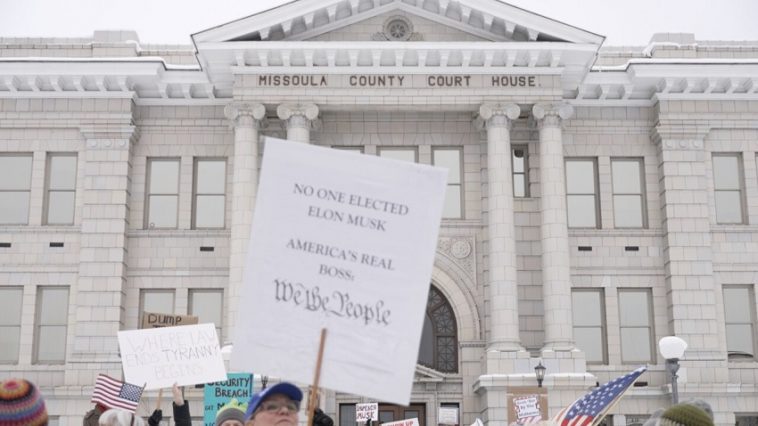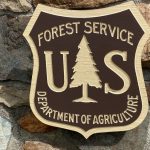Missoula, MT — On Presidents’ Day, protesters gathered outside the Missoula County Courthouse, joining a nationwide movement calling for a day of action to voice concerns over various social and political issues. The demonstration, which drew a couple hundred people, was part of a broader national protest organized by activist groups.
Chanting and holding signs, participants expressed their discontent with the current state of U.S. governance, touching on a wide range of topics from immigration policies to federal spending and the very definition of democracy. Local protester Kathy Pierandozzi shared her reasoning for attending, stating, “I’m here to speak out against what’s happening in our government. It’s our right.” Pierandozzi and others marched around the Courthouse, extending their rally into downtown Missoula as part of the peaceful demonstration.
Tony Davis, a fellow protester, described his frustration with the administration, remarking, “They’re not understanding what this is about the U.S. We are a nation of immigrants, the Statue of Liberty, welcoming people.” Davis, like many others in the crowd, emphasized the need for the government to align more closely with the country’s historical values of inclusion and empathy.
As the protestors made their way past the Courthouse on Broadway, a mix of reactions from local drivers was evident. Some honked in support, while others expressed their backing for President Trump and his policies, further highlighting the country’s divided political climate.
Pierandozzi, reflecting on the experience of protesting in a state like Montana, noted, “We live in Montana, so it feels like we’re kind of out here in the boondocks. But, as you can see, we also are feeling the same thing that everybody is feeling all over the world. I think we need to stand in the place where we live, and that’s what I’m doing today.”
Though Missoula is known for its more liberal leanings within the generally conservative state of Montana, the protest underscored the growing sentiment of dissatisfaction with the direction of national politics. It also served as a reminder that, even in smaller communities, residents are increasingly participating in national conversations, adding their voices to the ongoing debates around policy, rights, and democracy.
The demonstration, though local in its setting, was a powerful display of how protest movements continue to resonate across the country, bridging divides between urban and rural America, and showing that the call for change can be heard in every corner of the nation.



